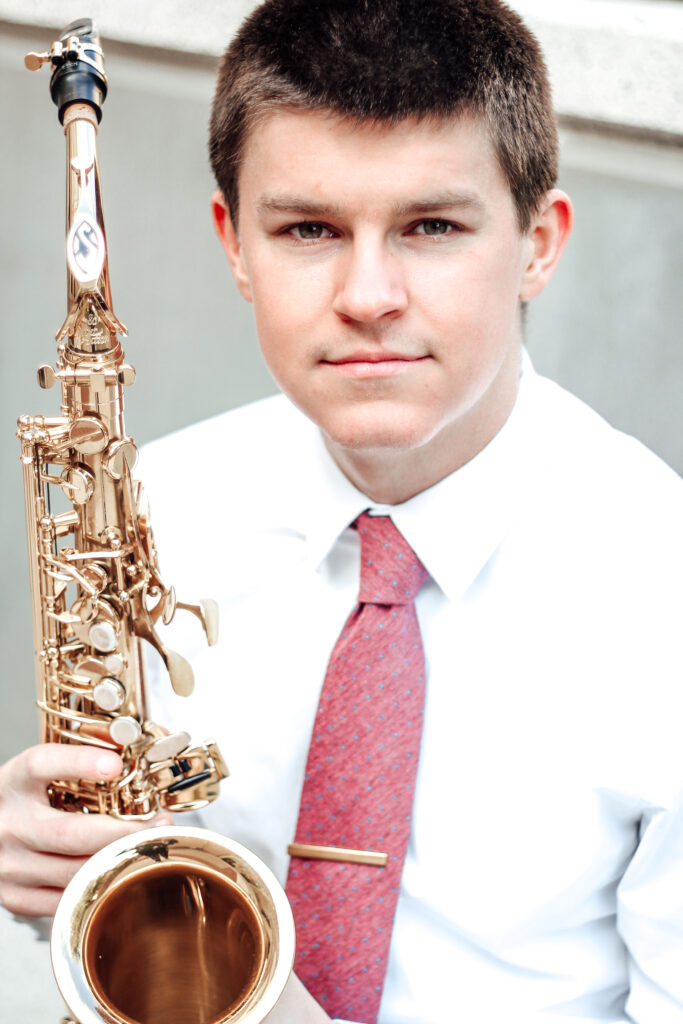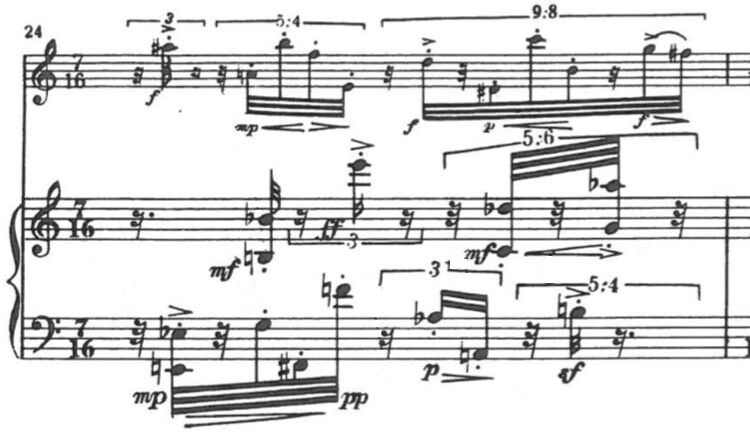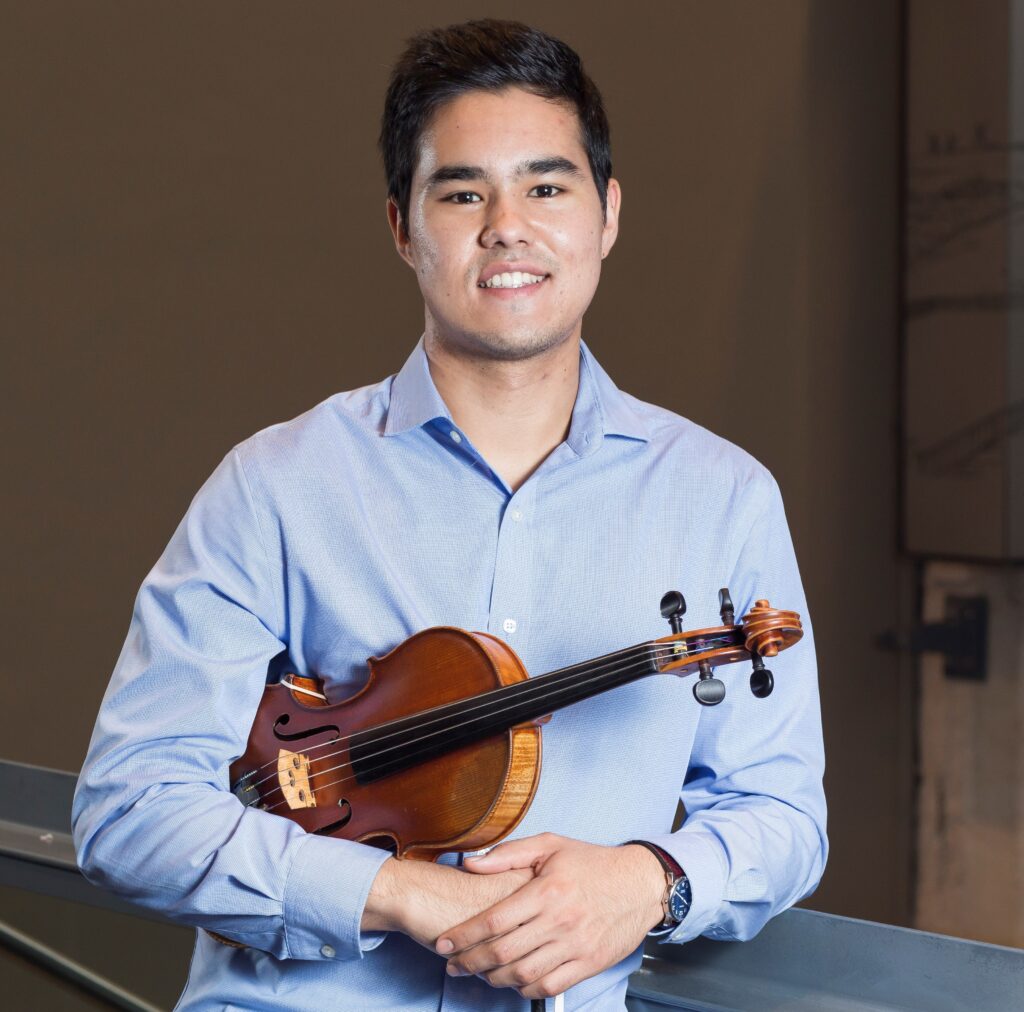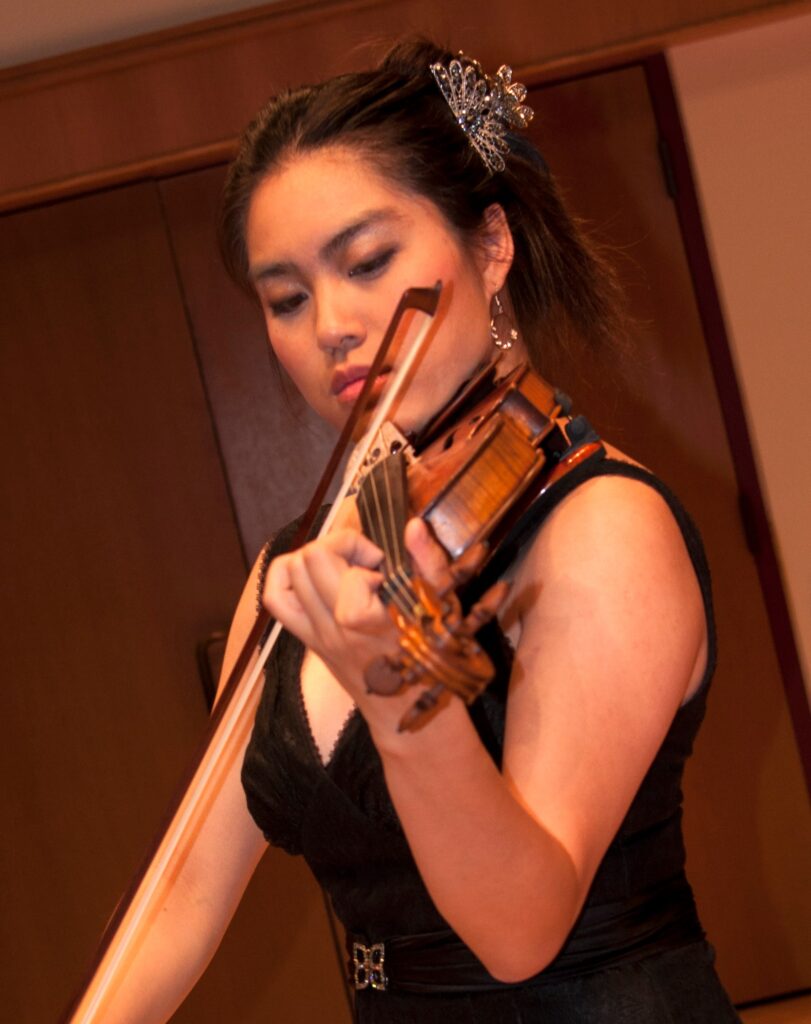CU ON THE WEEKEND
From Aretha Franklin to Paul Simon to the Sex Pistols, popular performers and bands from the 1970s made waves that ripple through music and culture today. Come hear four CU Boulder faculty—including Micheal Sebulsky, 2017 masters in theory graduate from our department—collaboratively discuss the legacy of such influential artists at Music of the Long ‘70s: Black Power, Punk, Jambands, and Jewish Soul, presented by CU on the Weekend on Saturday, March 4.
MEET OUR THEORY CERTIFICATE STUDENTS

Logan Banister is a DMA student in saxophone performance. He is especially interested in the intersection of the saxophone’s classical and jazz traditions.
Logan’s project explores the saxophone music of Edison Denisov and pays special attention to the composer’s rhythmic vocabulary. Denisov, a mathematician, utilizes complex rhythmic devices extensively in his compositions. Here is an example of an especially complicated passage from his 1970 Sonata for Alto Saxophone and Piano:

Logan’s research seeks order in what appears to be Denisov’s creation of chaos, providing insights that can inform a fuller understanding of the composition and aid performers in their collaboration and performance processes.

Zerek Dodson completed both the DMA in Collaborative Piano and the Certificate in Music Theory in December 2022. Active as pianist, harpsichordist, and organist, he enjoys pursuing a busy performance schedule across the Front Range.
Zerek’s project, “Deframing Schenker(ism),” investigated historical antecedents to the theories of Heinrich Schenker. Philip Ewell’s 2020 article “Music Theory and the White Racial Frame” ignited intense controversy and spilled out beyond the discipline into the public sphere. Critics of Schenker argued that his xenophobia and racism were inexorably reflected in his musical theories, while many of Schenker’s defenders dismissed these connections and valorized him as an individual. Attempting to decenter and “deframe” the historical Schenker, the project investigated eighteenth-century precedents and analogues to the core tenets of Schenkerian analysis. Concepts of musical reduction, prolongation, and fundamental structures could be successfully identified in partimenti exercises—voice-leading and composition exercises that guided generations of composers across all of Europe—as well as observed in several influential Austro-German music theory treatises. The project questioned how much of Schenkerian analysis need be credited to Heinrich Schenker, and argued for retaining its most effective aspects within a broader context.

Isaac Johnson is a Ph.D. student in Musicology who focuses on Gregorian Chant in North America, with further interest in 20th-century French organ music, Native American Catholicism, and the culture and sites of the American Southwest. He is also a published composer and organist, multi-instrumentalist, tenor, and choral conductor.
For his certificate project, Isaac plans to study modality in the organ music of Olivier Messiaen, especially his early and unpublished works. Messiaen made use of his modes of limited transposition; his mode 2, which corresponds to the notes of the octatonic scale, dominates his early organ works. Isaac seeks to explore how Messiaen’s arrangement and use of the tones in mode 2 further demarcate it from the octatonic scale, and the theological implications of the devout Catholic composer’s use of the different modes. While Messiaen wrote about both his own theological beliefs and his musical techniques, his unpublished and posthumously published works offer a new view into his compositional process.

Victor Avila Luvsangenden is a third-year DMA violin performance major. His doctoral research is on the music of Mongolian composers from the twentieth century, and he is particularly interested in understanding how national folk-music elements were synthesized with European musical idioms to create a canon of Mongolian classical music. Victor’s theory certificate project was supervised by Dr. Daphne Leong.
Victor’s theory certificate project is a paper on the 1974 Concerto for Violin and Orchestra by Zunduin Khangal. As Mongolia’s first modernist composer, Khangal was interested in expanding the creative possibilities of folk music, and he looked to more recent developments in European classical music as a source of inspiration. In his Concerto for Violin and Orchestra, the composer crafts diatonic, pentatonic, and chromatic musical ideas, and treats them as building blocks to experiment with. Victor provides an analysis of the ways that pentatonicism and post-tonal procedures and aesthetics are explored across the two movements of the concerto. He also discusses how the interaction and interplay of Khangal’s diverse compositional ideas create a musical narrative that can be characterized by conflict, struggle, and transformation.

Andres Orco-Zerpa is a DMA guitar student in the Thompson Jazz Studies program at CU, with a special interest in advanced rhythm and meter in jazz. While an active performer in the Denver metro area, Andres focuses on writing guitar pedagogy books and teaching aspiring guitarists of all levels and ages.
For his project, Andres investigated advanced rhythm and meter in jazz. Specifically, he analyzed modern repertoire and interviewed fifteen professional jazz musicians, including Vijay Iyer, Terri Lyne Carrington, Miguel Zenon, and Mary Halvorson. By combining music theory with ethnography, Andres demonstrated:
- How much jazz has evolved rhythmically in the twenty-first century,
- Why the current theoretical literature isn’t sufficient to explain modern jazz,
- And why it is valuable to include the voices of expert jazz practitioners in theoretical discussions of their music.

Julia Taylor is a DMA student in violin performance with an interest in how musicians benefit from knowledge of anatomy and physiology. As an early music lover, she performs as an apprentice violinist with the Baroque Chamber Orchestra of Colorado.
Julia’s theory project is an analysis of Belgian violin virtuoso Eugène Ysaÿe’s Violin Sonata No. 1. While the sonata is heavily influenced by J.S. Bach’s Unaccompanied Violin Sonatas and Partitas, it features chromaticism and violinistic writing that expand the limits of the solo violin repertoire.

Joy Yamaguchi is a violinist and educator with a passion for creating relevant and exciting music curriculum for young students. Joy is pursuing a doctorate in violin and certificate in music theory. She is a graduate teaching assistant to Károly Schranz.
Joy’s project is a music theory and musicianship curriculum for 5th-12th grade string students with beginning to intermediate proficiency on their instruments. The curriculum includes activities that introduce students to improvisation and composition and features musical examples from underrepresented composers. Joy’s project will exist as a free online resource for teachers.
Header image by Mick Haupt (pexels.com)
